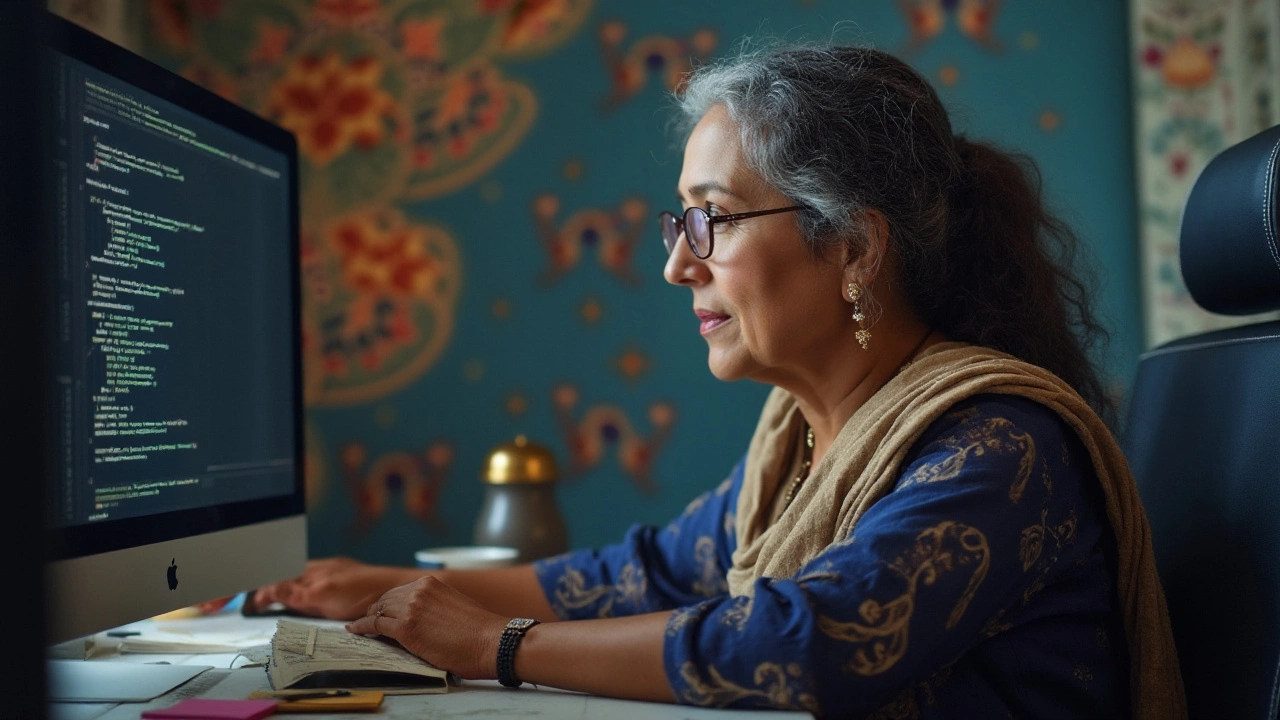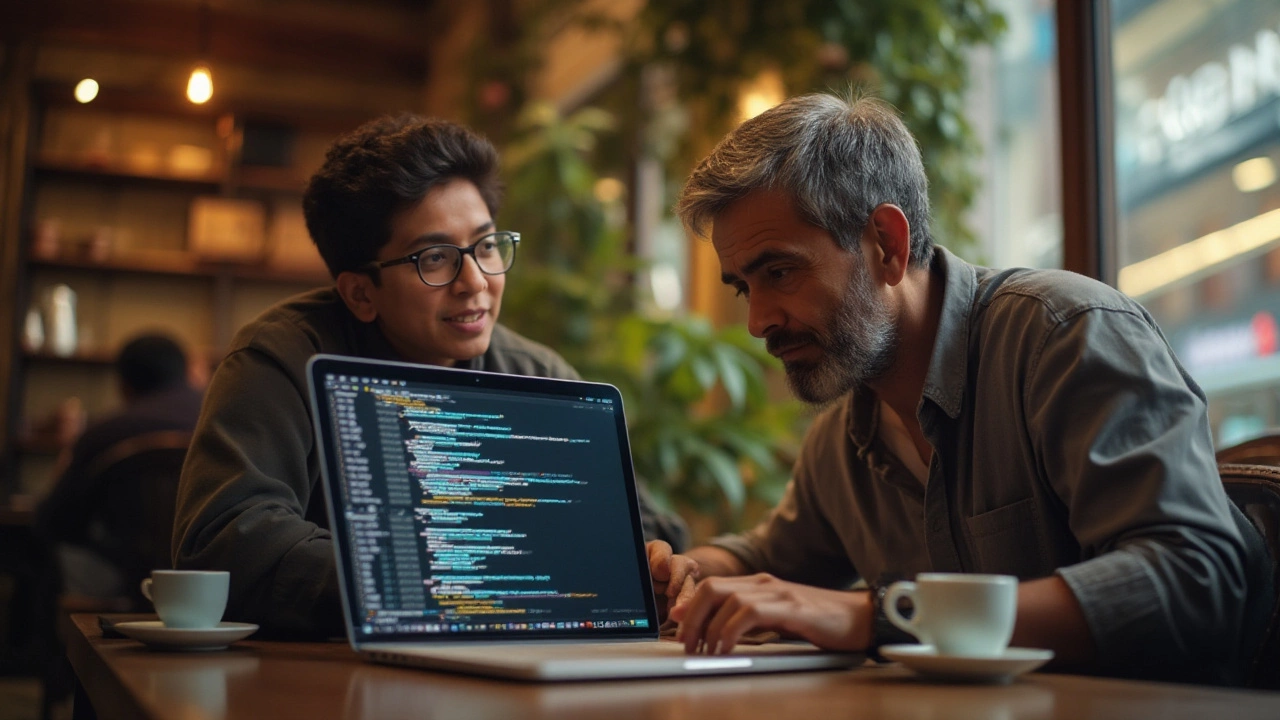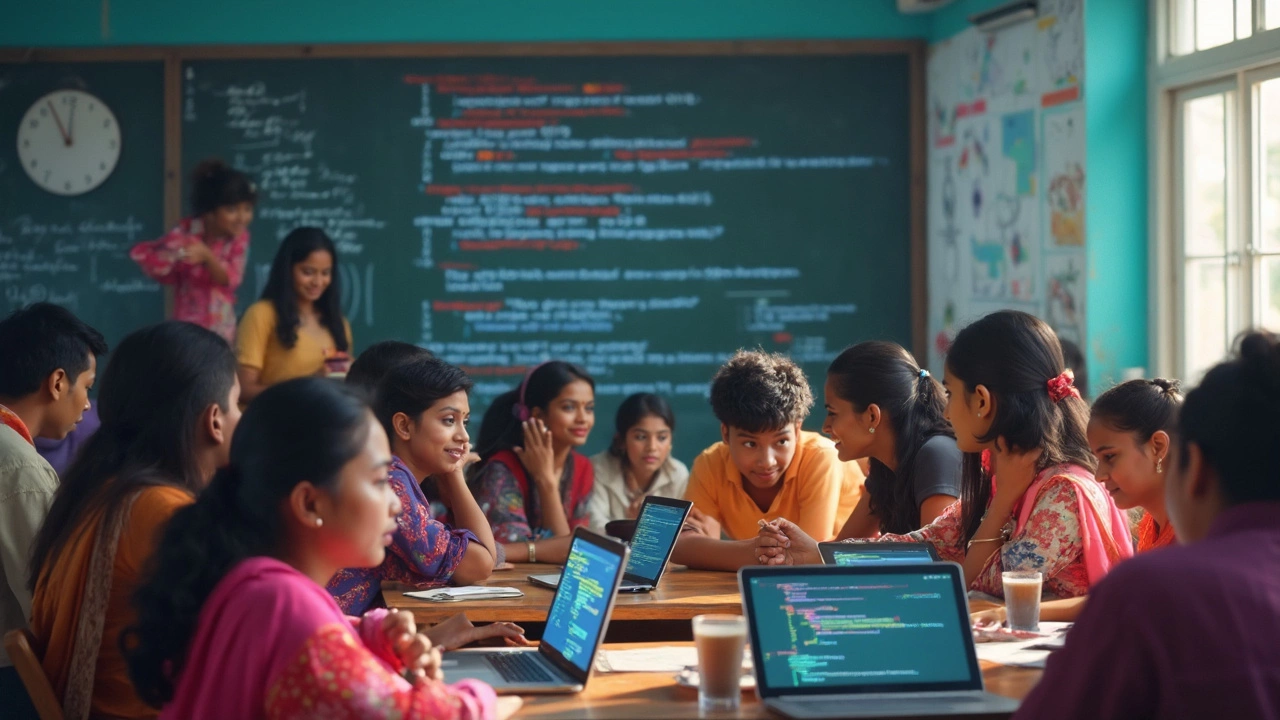The world of programming is as diverse as the myriad lines of code that are written each day. With tech roles becoming more accessible and sought after, a common query arises: just how old is the average coder? The tech industry calls to both fresh graduates and seasoned professionals, contributing to a broad range of ages pursuing coding as a career or passion.
In our exploration of coding demographics, we consider the unique paths that lead individuals to this field. Whether coding as a first job or transitioning later in life, understanding these demographics can reveal much about the evolving nature of the tech industry. Join us as we uncover the age-related trends and truths behind the people who bring the digital world to life.
- The Demographic Breakdown of Coders
- Age and Learning to Code
- Coding as a Second Career
- The Youthful Advantage?
- Future Trends in Coding Demographics
The Demographic Breakdown of Coders
In the ever-evolving world of technology, understanding the age demographics of programmers paints a revealing portrait of the industry. Studies have shown that the average age of a coder hovers around the mid-30s, with a significant number starting their coding classes and careers much earlier. The diversity in age often corresponds to the rapid pace at which technology itself changes, inviting both the young and the more experienced to keep up or lead the charge. Today, the landscape is rich with individuals in their early twenties, fresh out of college or bootcamp, eager to make their mark in tech. At the same time, there is an emerging cohort of professionals in their 40s and 50s, who have chosen to transition from other industries seeking new opportunities in programming.
This age diversity stems from various life paths leading to coding. Some start young, inspired by educational programs that introduce programming at an early age. Others are career changers, finding coding as a new passion or necessity later in life. The rise of remote work and online resources has made it easier for older adults to reskill and enter tech jobs. According to a programming demographics survey by Stack Overflow, around 20% of developers have coded for more than a decade, indicating there is no age limit to becoming a proficient coder. Corporate efforts to diversify the workforce have also influenced these dynamics, aiming to include perspectives that enrich innovation.
A notable trend is the increasing number of women and minorities who are entering the tech industry at various ages. Initiatives and scholarships aimed at reducing the gender and racial gap are slowly shifting these demographics. Although women make up a smaller percentage of the coding workforce, their participation is gradually increasing. In 2023, the percentage of female coders rose to around 25%, a number expected to grow as educational and workplace programs continue to empower diverse groups. The age of coders today ranges widely not only because age-diverse skillsets are valued, but also because real-world experience offers fresh insights into old problems.
"Diversity in age and background among programmers leads to innovative thinking, where the wisdom of age meets the creativity of youth." - Tech Review
Coding classes have become more accessible and tailored to match the pace and knowledge level suitable for adult learners. By offering flexible learning environments, both in-person and online courses cater to those juggling jobs and family commitments. It's no longer unusual to find a previously non-tech-savvy individual embracing programming, proving that the only prerequisite is the willingness to learn. This willingness crosses generational lines, offering a unique blend of experiences and approaches within teams.
The broad age range among coders sheds light on another aspect - the flexibility of the tech industry in accommodating diverse life stages. Some choose to program after retirement as a way to stay mentally active and engaged with community or freelance projects. Younger coders often bring a modern view on digital trends and social media, while older programmers may draw on experiences from their past careers to tackle complex problems. Age of coders thus represents not just a numerical value, but a spectrum of perspectives enriching the tech world.
Age and Learning to Code
The question of when to begin a journey into coding often emerges in conversations about entering the technology field. While it might be easy to assume that the younger generation dominates this demographic due to their early exposure to technology, this field actually offers opportunities regardless of age. Recent surveys reveal that many individuals delve into programming at various stages of life. This flexibility signifies a shift in traditional career paths, where learning to code is no longer tied to a specific age group. As lifelong learning becomes an essential aspect of professional growth, many adults, whether in their 30s, 40s, or even 50s, opt to learn coding skills.
Despite the popular notion that coding is a skill predominantly picked up during teenage years, adults are increasingly attending coding classes and bootcamps. According to data from Stack Overflow, approximately 36% of developers report that they began coding between the ages of 11 and 17. However, an impressive 25% started learning to code between the ages of 25 and 34. This statistic reveals that significant numbers of people are embracing programming as a second career or to pivot their current job roles. The advent of online education platforms has greatly facilitated this trend, offering courses designed for all ages, tailored to various learning speeds and styles.
"Coding is just like learning a new language," says Tim O'Reilly, the founder of O'Reilly Media, "It's never too late to start, and the best way to learn is by doing."Embracing a stimulating environment is crucial for older learners. They are often noted for their perseverance and discipline, qualities that serve them well in the challenging, yet rewarding process of picking up programming skills. Adult learners might approach this new skill with a sense of curiosity and resolve that is distinctly different from when they were younger. Often, these individuals bring valuable life experience and domain knowledge from previous careers, enriching their coding journey with unique problem-solving perspectives.
With an increasing number of people's first interaction with code occurring in their post-secondary life, considerations around integrating programming into earlier educational curriculums are growing. This could aid in balancing age representation in the tech field. For some, these early interactions are organic and led by passion or necessity. Yet for others, it is a deliberate educational choice, motivated by the clear demand for programming skills across sectors. In essence, learning to code at any age not only opens doors to dynamic job opportunities but also equips individuals with a toolset for innovation and personal projects.
In stark contrast, younger coders might benefit from the ability to absorb new concepts with greater fluidity, driven by their affinity for digital technologies, and their natural desire for engaging with problem-solving activities. Nonetheless, it’s the diversity of ages in the tech sphere that fosters a collaborative environment where different perspectives can lead to great innovations. This age inclusivity within coding communities strips away the stigma that programming is solely a young person's game, embracing it as a skill set that can add value, regardless of when one starts.

Coding as a Second Career
It's not uncommon to find individuals embracing coding as a second career. This shift is often driven by the allure of the tech industry, which offers not only impressive salaries but also the opportunity for creative problem-solving and meaningful work. Many who make this transition bring with them a wealth of experience from previous careers, which can often enhance their capabilities as programmers. For instance, someone with a background in project management might find their way into tech project management roles, while a former educator could excel in creating educational tech tools.
One interesting fact is that the average age of those who decide to dive into coding later in life is around 30 to 40 years. People within this range are searching for new challenges and want to utilize their established skill sets in IT. They often enroll in coding classes or boot camps to quickly gain the necessary programming skills. This method has proven successful for many, offering an intense, focused introduction to coding practices. In fact, according to a 2023 survey by Stack Overflow, nearly 25% of professional developers were self-taught, highlighting the role of alternative learning routes.
A particularly inspiring story comes from journalist and coder Ellen Ullman who said,
"That's the joy of coding for me. Finding that elusive bug and not stopping until you’ve fixed it."Her experience not only underscores the emotional rewards of a career in programming but also emphasizes the satisfaction that many find in transitioning into the field, despite earlier paths. For some, coding is not just a job, but a vocation that allows them to reinvent themselves in a dynamic industry.
The decision to switch to a programming career later in life often hinges on the promising career prospects in technology. Even though it can be daunting to move away from an established career, the tech world offers a sense of community and continuous learning that is immensely appealing. It's important for anyone considering this leap to carefully assess their interests and how their past professional experiences can integrate into tech roles. With determination and the right resources, coding as a second career can unfold a world of exciting opportunities.
The Youthful Advantage?
The image of a young, hoodie-clad programmer dominating the world of tech has been popularized by movies and media. But does youth truly offer an edge in the world of coding? There's a stereotype that younger individuals, particularly those in their teens and twenties, can absorb programming languages with the same ease they learn their native tongue. This begs the question – what is it about youth that seems beneficial to coding?
To begin with, younger coders often come from a generation that has been immersed in technology since childhood. With tablets, smartphones, and computers at their fingertips, they develop a fluency in digital communication early on. This fluency often makes the leap to programming less daunting. The intuitive nature with which they handle technology can lead to faster learning curves and a natural problem-solving approach. Additionally, younger coders might not yet be encumbered by the responsibilities that come with later life, such as maintaining a household or raising children, allowing them more freedom to dedicate time and energy to mastering new skills, which is vital in the fast-paced tech environment.
In terms of adaptability, younger programmers tend to embrace change with an open mind. The ever-evolving landscape of programming languages and tools rarely intimidates them. They're usually quick to pick up new technologies and thrive in environments that demand constant innovation. Moreover, many educational systems are now incorporating coding into their curriculums from an early age. This inclusion not only normalizes coding as a core skill but also provides students with a confidence boost as they transition from school into their careers. An early start can mean years of experience by the time they're ready to enter the workforce.
It's important to mention the enthusiasm and passion that youth often bring to their work. In many cases, they've dreamt of working with technology from a young age, driven by inspirations ranging from video games to digital art. This fervor is reflected in their determination to innovate, create, and explore beyond conventional boundaries.
"The younger a person begins to develop essential technical skills, the more opportunities they'll have to hone and expand those skills," says Ilya Grigorik, a web performance engineer at Google.While youth may have its advantages in terms of time and energy, it's crucial to stress that the path to becoming a programming expert isn't limited to the young. The tech industry values creativity, problem-solving abilities, and a willingness to learn—traits that can be developed at any age. While the youthful advantage may provide a head start, the constant learning environment of coding ensures that passion and dedication ultimately lead to success, regardless of when one's journey begins.

Future Trends in Coding Demographics
As we look to the future of programming demographics, there is a fascinating blend of tradition and innovation shaping the tech landscape. One notable trend is the increasing participation of younger people in coding. With the proliferation of educational programs aimed at children, it's not uncommon to see kids as young as six or seven starting to code. Initiatives like Code.org and Scratch have made coding approachable and fun for younger generations, laying a strong foundation for their future in programming. As a result, we might witness coding as a fundamental part of basic education, much like math or science, which could significantly shift the average age of coders.
On the opposite end of the spectrum, we're also seeing a rise in individuals who turn to coding later in life. Many professionals in mid-career stages are looking to pivot into technology roles, perceiving coding skills as an avenue for new opportunities or even a second career. Services such as Coursera, Udacity, and freeCodeCamp cater to this demographic by offering flexible learning paths that accommodate their busy schedules. "Coding knows no age—it's about passion and persistence," said renowned software engineer Tim O'Reilly, highlighting the inclusive nature of programming and the potential it offers to learners of all ages.
In terms of gender diversity, the future is promising but complex. While there has traditionally been a significant gender gap in the coding industry, efforts to bridge this gap are gaining momentum. Organizations like Girls Who Code and Women Who Code have impacted countless lives by empowering women and girls through coding education and support networks. While these efforts are bearing fruit, achieving greater diversity in the coder population remains an ongoing journey requiring sustained advocacy and structural changes in education and the workplace.
The geographic distribution of coders is also expected to evolve. With the rapid rise of digital transformation globally, coding is no longer the domain of tech hotspots like Silicon Valley. Nations across Asia, Africa, and Latin America are witnessing a tech boom, driven by increased access to online learning resources and a growing recognition of technology’s role in economic development. This is likely to result in a more globally diverse community of programmers, each bringing their unique perspectives and innovations to the fore.
All these trends hint at a dynamic future where coding continues to democratize expression and opportunity across age, gender, and geographies. As these trends unfold, the average age of coders could become less of a focal point, overshadowed by the richer tapestry of diverse backgrounds and experiences contributing to the world of technology. What remains certain is that coding will continue its evolution, providing a platform for both young dreamers and late bloomers to leave their mark on the digital world.



